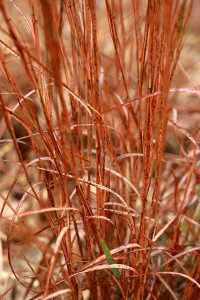
Monarch on Asclepias incarnata-bigblogofgardening.com
The mantra of the day is “Plant native.” Does this mean that we should plant only native plants in spite of the fact that there are thousands of plants that are not native to the United States? Some say that we should plant only natives in our landscapes because they are crucial to the survival of our native insects, especially caterpillars, and birds. Others say that we can plant both natives and “exotics”, the definition of which is species introduced either accidentally or deliberately by human actions into places beyond their natural geographic range.
In discussions of native plants, the definition of native is highly debatable. Native to where? Native to a particular state? Region? Country? Is a plant native in North Carolina still considered a native in Minnesota even if it will live there although it is not endemic to that state?

Malus ‘Camelot’-mge.com
Are all “exotics” bad? We know that some plants are deemed invasive because they have no natural predators and can grow at will, disrupting natural habitats. However, there are thousands of plants that grow elsewhere in habitats similar to ours and that do not have invasive tendencies. For instance, one of the most beloved ornamental trees in the United States is the crabapple, a native to Europe and Asia. Should this tree be removed from American landscapes because it is not a native?
I am not an ideologue about anything; thus, for me, everything is shades of gray rather than black or white. I take the same position on plants. I am always looking for new plants that have special attributes to fill specific needs in the landscape. I do my best to research them so that I’m not planting anything considered invasive. Most states now have invasive plant lists (some better researched than others) so you can avail yourself of this information in order to prevent further distribution of these particular plants.
 The book, The Living Landscape by Rick Darke and Doug Tallamy, is the best exposition I’ve read on the importance and benefits of planting natives and how native plants can play essential as well as functional roles in gardens designed for multiple purposes. I have, therefore, tried to incorporate as many natives into my designs as possible but if I think an “exotic” fills my client’s needs better, the latter will be my choice.
The book, The Living Landscape by Rick Darke and Doug Tallamy, is the best exposition I’ve read on the importance and benefits of planting natives and how native plants can play essential as well as functional roles in gardens designed for multiple purposes. I have, therefore, tried to incorporate as many natives into my designs as possible but if I think an “exotic” fills my client’s needs better, the latter will be my choice.
LEAP (Lake Erie Allegheny Partnership) is a regional partnership, the members of which are collectively dedicated to protecting native habitats and species, improving water quality and enhancing urban green space between Sandusky Bay and Buffalo. LEAP has a program to promote three native plants each calendar year. For more information on LEAP and its Native Plant Promotion Program, go online to www.leapbio.org. The three plants chosen for 2016 are Lindera benzoin (Spicebush), Lysimachia terrestris (Yellow Loosestrife or Swamp Candle), and Schizachyrium scoparium (Little Bluestem).

Lindera benzoin flowers-willowaynurseries.com

Lindera benzoin fruits-Missouri Plants
Lindera benzoin, a deciduous shrub, would fit well at the back of a perennial border where its six to eight foot height would act as background for the perennials in front of it. It is a host plant for the spicebush swallowtail. Its yellow flowers in late April provide nectar for butterflies. They are followed, in the fall, by glossy red fruits that are eaten by migratory birds. The common name refers to the sweet, spicy fragrance of the stems, leaves, and fruits when bruised. Happily, it is deer-resistant. Plant Lindera benzoin in a moist location in full sun or partial shade.

Lysimachia terrestris-vfthomas.com
I admit to total ignorance of Lysimachia terrestris, a one to three foot tall, mid-summer blooming perennial that adds color to rain gardens and damp areas. Each petal of the star-like yellow flowers has two red dots at its base, forming a circle. Like most Lysimachia, it will colonize by underground runners. This perennial attracts both birds and butterflies as well as bees that collect pollen or nectar.

Schizachyrium scoparium ‘Standing Ovation’-northcreeknurseries.com

Schizachyrium scoparium winter color (Kelly Norris)
Schizachyrium scoparium has long been one of my favorite ornamental grasses. Its ability to thrive in very dry, sunny sites is amazing. If, in fact, it is placed in a site that is too moist or is fertilized, it will flop instead of remaining erect. Its spring and summer color is steel blue with a bit of maroon but it is in its glory in the fall when the maroon and orange tinges become paramount. During the winter, it is the only grass I know that is bronze rather than beige. Like all ornamental grasses, Schizachyrium scoparium is not on the deer menu. Height varies between two and four feet depending on the cultivar. It provides both food and shelter to birds and butterflies.
I believe that a forceful claim has been made that our beloved earth is changing for the worse. If planting natives will help our native insects and birds survive, remembering that life is an interlocking circle, we should all strive to include natives in our designs.


2 Comments